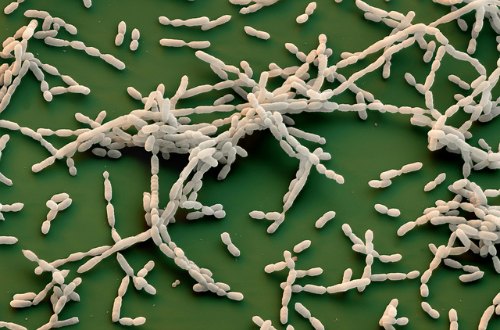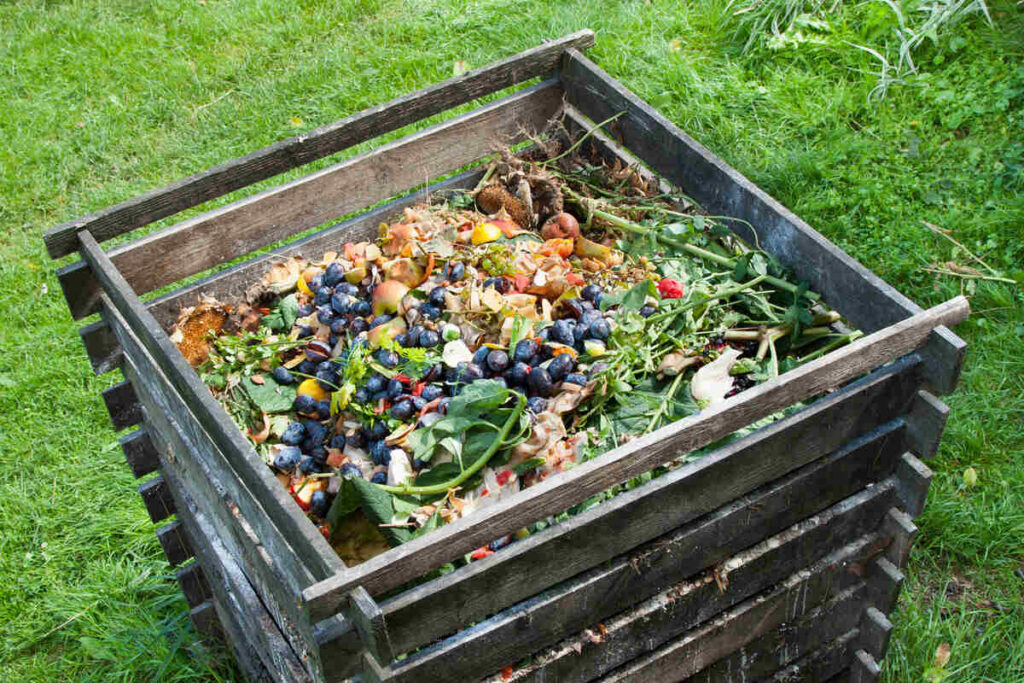Why Start Composting?
Gardeners have long made and used compost because of the way it improves garden soil. Today, we also compost plant and vegetable matter because it is an important way to reduce the amount of waste that is burned or dumped in landfills. Yard wastes and vegetable scraps can make up as much as 20% of our household garbage. Composting effectively recycles that waste while giving you a nutrient dense soil amendment. It’s a twofer!The Science of Composting
Composting carries out part of the earth’s biological cycle of growth and decay. Plants grow by capturing the sun’s energy along with carbon dioxide from the air and nutrients and water from the soil. When plants (and the animals that eat them) die, they become raw materials for the composting or decay process. Microorganisms, fungi, insects, worms, mites, and other creatures convert the carbon from dead plants into energy for their own growth, releasing carbon dioxide into the air. Similarly, they recycle the nutrients from the decaying plants into their own bodies and eventually back into the soil. Other plants and microorganisms use the carbon and nutrients released by the composting process, and the cycle begins again. The material that remains from the decay process is similar to soil organic matter. It holds water and nutrients in the soil, and makes the soil more porous and easier to dig. Fast or hot composting. We can manipulate the decay process to make it proceed quickly. We do this by balancing food, water, and air in the compost pile to favor the growth of thermophilic (high-temperature) microorganisms. One byproduct of microbial activity is heat. When conditions are favorable for high-temperature microorganisms, compost piles heat rapidly to 120° to 150°F. This temperature range kills most weed seeds and pathogens (disease organisms), but does not kill mycorrhizae (beneficial fungi that help plant roots absorb nutrients). Once the hot phase is complete, lower-temperature microorganisms, worms, insects, and other invertebrates complete the decay process.

Managing the Decay Process
You can affect the speed of the composting process and the quality of the compost product by managing the factors described below.
Food (raw materials). For fast composting, the initial mix must have the proper moisture and air content, and organic materials that provide a rich food (energy) source for bacteria. A list follows of some materials commonly used in making compost. They are separated into “energy” materials, “bulking agents,” and “balanced” materials.
Compost Raw Materials Table
Bulking agents
(low moisture, high porosity, low nitrogen)
• wood chips
• sawdust
• grass hay
• wheat straw
• corn stalks
Energy materials
(high moisture, low porosity, high nitrogen)
• grass clippings
• fresh dairy, chicken or rabbit manure
• fruit and vegetable waste
• garden trimmings
Balanced raw materials
(low to medium moisture, medium porosity, medium nitrogen)
• Ground tree and shrub trimmings
• Horse manure and bedding
• Deciduous leaves
• Legume hay
Energy materials provide the nitrogen and high-energy carbon compounds needed for fast
microbial growth. If piled without bulking agents, these materials usually are too wet and dense to allow much air into the compost pile. When you open the pile, it will have a foul, “rotten egg” smell.
Bulking agents are dry, porous materials that help aerate the compost pile. They are too low in moisture and nutrients to decay quickly on their own.
Balanced raw materials Some raw materials contain a balance of energy and bulking agent
properties. These materials will compost readily without being blended with other ingredients. Examples include horse manure mixed with bedding, spoiled alfalfa hay, and deciduous leaves. These materials are handy for ensuring the success of hot compost piles.
TIP: Grinding, cutting, smashing, or chopping raw materials reduces particle size.
Small particles have more surface area for microbial activity and are easier to mix.
Temperature: The pile must be big enough to hold heat. A hot pile decays much faster than a cold pile. Small piles are usually colder, because they have small cores that hold less heat. Small piles also dry out faster. A pile of about one cubic yard is big enough for year-round composting, even in cold-winter areas.
Moisture:
All materials in the pile must be moist, but not soaking wet. The mixed material
should feel moist, but you should not be able to squeeze water out of it with your hands. At dry times of the year, you may need to add water. In rainy winter locations, a pile may not heat up unless you cover it to keep out rainwater. Check moisture when you turn the pile.
Aeration The microorganisms responsible for fast decomposition need oxygen. In the pile,
oxygen is consumed by microbes. The pile needs to be porous to pull outside air into it. Use enough bulking agents to create a porous pile.
Aeration:
As the pile decomposes, it settles, reducing aeration. Turning the pile or adding bulking agents improves aeration.
Microorganisms:
Raw materials used to form a compost pile usually contain all the microorganisms needed to make compost. You do not need to add soil or compost starters with “special”
microorganisms. The best source of microorganisms (if needed) is finished compost.
Nutrients. Just like people, microorganisms need nutrients (such as nitrogen, phosphorus,
sulfur) to grow and reproduce. These nutrients occur in the raw materials used in the compost mix. Additional fertilizer from any source (organic or inorganic) usually is not needed. Compost additives such as blood meal and bone meal are simply organic fertilizers; they do not contribute anything magic to the compost pile.
Let nature do its work!
Slow Composting
No time to manage a compost? Employing slow composting is an easy and convenient way to turn yard wastes into a useful soil amendment. It is often the best method for people who do not have the time to tend a hot compost pile. Simply mix nonwoody yard wastes into a pile and let them sit for a year or so. You can throw the occasional kitchen waste in, but be sure to keep it minimal as you may end up breeding flies and attracting animals. Microorganisms, insects, earthworms, and other decomposers will slowly break down the wastes. A mixture of energy materials and bulking agents provide the best food source and environment for decomposition. Stack it up and let it go!
Compost Troubleshooting
What if my hot compost isn’t hot? Check the pile.
• If the pile is dry it needs more moisture.
• If the pile is mostly bulking agent it needs more nitrogen. Add energy
materials or nitrogen fertilizer.
• If the pile is too wet add more bulking agent. Cover the pile or
build a larger pile during the rainy season.
• If the pile has a foul smell it needs more air and less water. Try turning
the pile more often or adding more bulking agent.
• If the pile is too small it will not hold the heat.
• If it is cold outside try building a larger pile to hold the heat.
Sometimes you may have several problems to overcome. If you cannot get the pile to heat, all is not lost, because the pile will still break down by the slow method.
Have fun composting!
Credit to: Craig Cogger, Ph.D., Washington State University Cooperative Extension Soil Scientist, and Dan M. Sullivan, Ph.D., Associate Professor, Department of Crop and Soil Science, Oregon State University, Corvallis, OR.



GIPHY App Key not set. Please check settings
One Comment